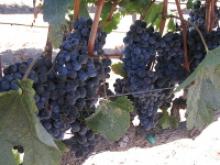The news about California is pretty bad; layoffs, winery foreclosures and vineyard sales in the midst of a grape glut. But even though Washington wineries are noticing the same buying
patterns—restaurants selling from their cellar, customers buying at the $25.00 and under price tier instead of the higher ranges—right now, it doesn't seem quite so drastic in Washington. That doesn't mean Washington wineries are ignoring the recession, by any means. Wineries and grape-growers are both very much cash-dependent businesses. Wineries have to sell last year's wines to make space for this year's, and they have to pay for packaging and shipping, as well as inventory, production and staffing costs. Washington vineyards have the same problems as their California sisters, including the effects of unpredictable weather on the grape harvest.But what seems to be happening is that while restaurant purchases are down and higher-tiered vintage wines are not selling as well as they might, consumers are buying just as much wine, but spending their money on the middle and lower-tiers. According to Robin Pollard, executive director of the Washington Wine Commission "Rather than buying a $60 bottle, they'll buy three $20 bottles." Keith Love, the vice president of Washington's largest winery, Chateau Ste. Michelle Wine Estates in Washington observed that 99% of Ste. Michelle's 2 million-case production retail price point is $10 to $20 a bottle, but at the same time suggests that he expects slower sales for the winery's higher tiered lines like Spring Valley, Col Solare and Northstar. These are wines which retail for $40 or more a bottle, and are primarily sold to restaurants—restaurants who have cut back, drastically, on their purchases.
It's all well and good for a company like Ste. Michelle to turn to their lower tiers to make up for possible lost sales. They've got exceedingly good distribution. It's a bit different for the smaller Washington wineries, particularly the independents. It's a little harder for the smaller wineries to reach the consumer. That doesn't mean that smaller wineries are done for, but it does mean that local purchases at the winery are more important than ever. Keep in mind that you can often get a case discount even for online purchases, and that at the winery are some fabulous deals, often for amazing wines that are produced in quantities too small to distribute widely. It's looking like this will be a good harvest for Washington, with 2009 on a bottle being something to remember. Let's try to do our part to keep Washington wines alive. Buy Washington, and try to buy from the winery, directly.
